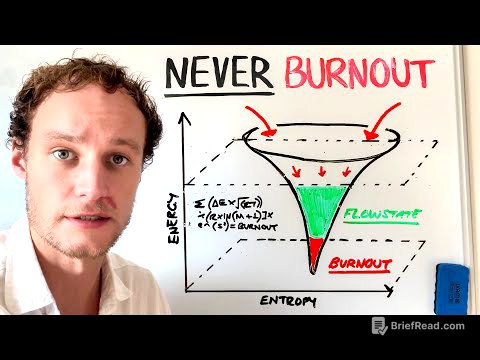TLDR;
This video provides a comprehensive guide on how to improve your English language skills from A1 to C1 level for free, using enjoyable and effective methods. It emphasizes practical techniques over traditional rote learning, focusing on grammar, pronunciation, listening, speaking, and vocabulary. The video is divided into stages based on language proficiency levels, offering tailored advice and resources for each stage.
- Focus on practical and enjoyable methods.
- Utilize free online resources and tools.
- Practice consistently and track progress.
- Tailor learning to individual needs and pace.
Introduction [0:00]
The speaker introduces the video's purpose: to guide viewers on improving their English from A1 to C1 level without paid courses. She shares her own C1 level certification as proof of her expertise. The methods discussed are presented as enjoyable alternatives to traditional learning, utilizing free resources and techniques adapted from renowned teachers.
Level A1 to A2: Beginner Stage [0:29]
This section focuses on learners at the A1 to A2 level. It starts with the importance of assessing your current English level using the Duolingo English Test to accurately determine your starting point. The speaker addresses the common issue of ineffective school education that relies heavily on memorization. The approach for this level involves learning grammar and vocabulary in a more practical and engaging manner.
Grammar [1:38]
The speaker suggests using the Dot.org website for grammar lessons. This resource provides simplified explanations of grammar rules from A1 to B1, along with quizzes to test understanding. The recommendation is to study one grammar rule per day to avoid feeling overwhelmed and to consolidate learning effectively.
Pronunciation [2:55]
The speaker emphasizes the importance of pronunciation over accent, focusing on the correct articulation of words. The Easy English channel on YouTube is recommended for its calm and slow speech, which is ideal for beginners. Viewers should watch one video daily, extract three new words, and focus on their pronunciation and sentence formation.
Vocabulary [5:10]
To expand vocabulary, the speaker advises using a language learning application for 10 minutes each day. This application helps in learning new words and understanding their usage in sentences. The speaker avoids setting specific time limits for each activity, recognizing that learning pace varies among individuals.
Level A2 to B1: Elementary Stage [6:39]
For learners at the A2 to B1 level, the speaker recommends continuing with the Dani website to master grammar. The approach involves choosing one A2 level lesson each day and actively repeating the words and sentences spoken in the video. The English Speaking Course channel is suggested for its enjoyable videos that explain grammar rules and vocabulary in a clear and slow manner.
Technique for A2 to B1 [7:56]
The speaker introduces a technique where learners watch a video, identify five new words, and use Youglesh.com to understand their pronunciation and usage in sentences. The most important step is to write a short script summarizing the video content in your own words. The Kaba D K website is recommended for correcting grammar and spelling mistakes in the script. Finally, learners should practice speaking by reading the script in front of a mirror.
Duolingo English Test [10:06]
The speaker advises taking the Duolingo English Test monthly to assess progress and determine readiness for the next level. She cautions against self-evaluation to avoid biased results.
Level B1 to B2: Intermediate Stage [10:26]
This section focuses on learners at the B1 to B2 level, emphasizing consistent practice for fluency. The speaker recommends starting the day with Tang Twisters to warm up and improve pronunciation. Reading training is introduced using News in Levels, which provides news articles adapted to different proficiency levels.
Listening and Speaking [11:41]
For listening practice, the speaker suggests using ad.com for its diverse podcasts. Learners should listen to a video twice, with the second time involving shadowing (repeating the words and sentences with the same pronunciation). Two speaking techniques are recommended: summarizing videos in writing and then speaking about the summary without the script, and the word-to-story method, where learners create a story connecting new words.
ESL Discussion Website [14:29]
The speaker recommends using the ESL Discussion website for additional speaking practice. This involves choosing a topic and answering related questions for 15 minutes to improve fluency and prepare for speaking on various subjects.









